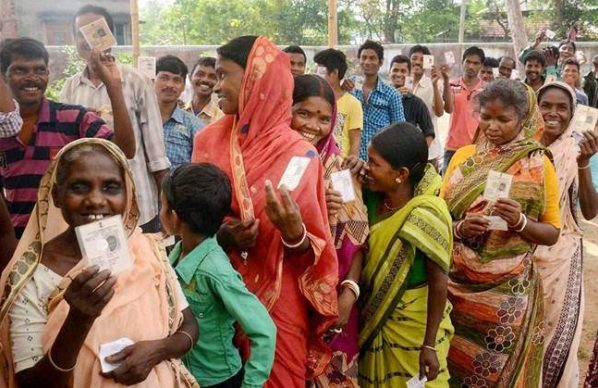All eyes will be on West Bengal this panchayat election, Monday, May 14. Because the results of this rural poll will indicate the outcome of the 2019 Lok Sabha poll results in the state.
Does Mamata Banerjee’s Trinamool Congress still hold enough power over the rural electorate? Have the Left parties been completely wiped out from Bengal’s villages? Does the Bharatiya Janata Party (BJP) have a support base in Bengal’s grassroots? All these questions will be answered this panchayat election.
The three tier panchayat system, instituted in West Bengal in 1978, was the key to Left Front’s uninterrupted rule of 34 years. The gram panchayat (anchal), panchayat samitis (block) and zilla parishads (district) results indicate who has maximum power in rural Bengal.
Why is this so important? For one, the rural population in the state is 62,183,113 while the urban population is 29,093,002 (2011 Census). That is a clear indication that the panchayat results will reflect the mandate of the majority population.
Also, the “symbol” of a political party is very important in villages – it gets etched into the minds of the electorate. Villagers meet the winning candidates in the locality on a regular basis (the lawmakers are “distant” in comparison), they execute most of the development projects and release funds for schemes. Moreover, projects and schemes of the government are implemented through the panchayats. At least Rs 2,500 to Rs 3,000 crore is spent annually from Central and state government schemes through the three-tier panchayat system.
There are enough indications already that panchayat election results get reflected in subsequent “bigger” elections in the state. The 2008 panchayat election results were in fact, first indications of a change coming into the politics of West Bengal.
It was in 2008 that the CPM started losing its grip over rural Bengal following the Singur and Nandigram agitations. While the Left still managed to get 13 zilla parishads and the Trinamool Congress managed only two, this was still a strong indication of the swing in favour of the Trinamool Congress from the gram panchayat results where the party performed exceptionally well in North 24 Parganas, Howrah, Hooghly, Nadia, even in West Midnapore and Burdwan districts.
This result reflected strongly in the 2009 Lok Sabha polls and eventually in the 2011 Assembly elections, in which Trinamool Congress finally ended 34 years of uninterrupted Left Front rule in Bengal.
This year, much has been talked about the “alliance” at the grassroots level between BJP, CPM and the Congress – much to the embarrassment of the top leadership of these political parties (the top leaders have in fact, denied such alliances ever took place).
It is however, important to know the dynamics of such alliances at village levels and why they do take place, no matter what the top party leaders comment officially.
It is possible to work out these tie-ups only at the village level – the sole objective behind all the opposition parties coming together is to fight the alleged Trinamool terror. And if the alliance works out successfully and reflects in the gram panchayat result, that is a sure way of proving one’s strength at the village level. And sure that’s important, and the only way to deal a blow on Trinamool Congress. Opposition parties at the local level know this, no matter what their leaders in Kolkata or Delhi say. Such informal alliances are impossible to work out during Assembly or Lok Sabha elections.
In the 2013 panchayat polls, the Trinamool Congress had won 55.8 percent of gram panchayat seats, and 13 out of 17 zilla parishads. The Left Front, in comparison, won 22.9 percent, Congress approximately 7 percent of the gram panchayats, and the BJP’s presence was negligible. The Trinamool Congress also managed to capture the hung bodies subsequently.
This year, the Trinamool Congress is making a desperate attempt to show that it has become even more powerful than last time. The party has already won 20,076 out of the 58,692 seats, uncontested, which accounts for 34 per cent of the seats. And there have been reports of violence, death and bloodshed for the past few weeks over filing of nominations, and in other clashes.
For West Bengal, this is not just a rural poll, it is a show of strength and a way of knowing what the 2019 Lok Sabha election results will hold. And that is when the ruling party in Bengal wants to take on the BJP nationally.

